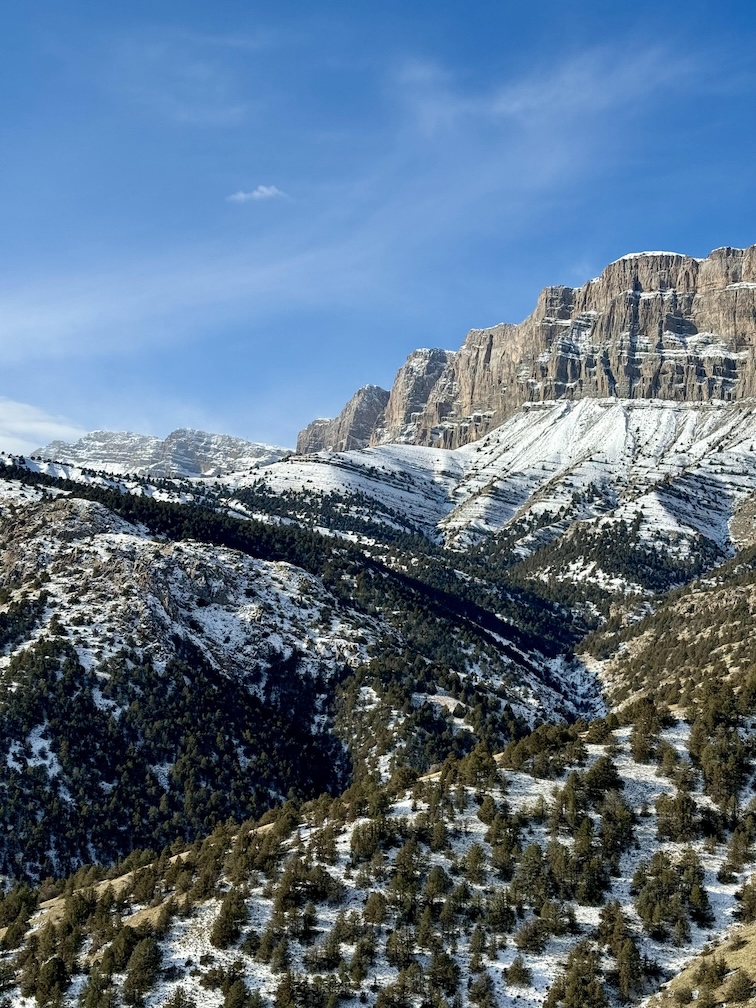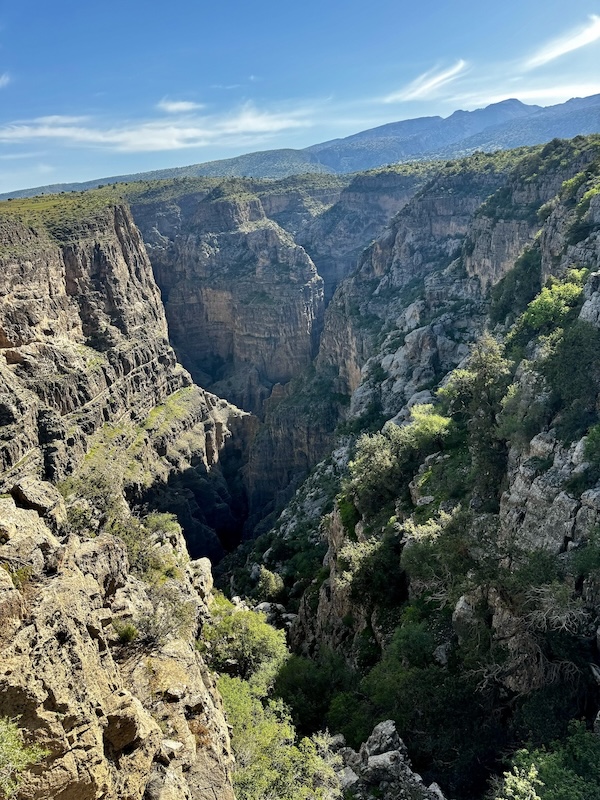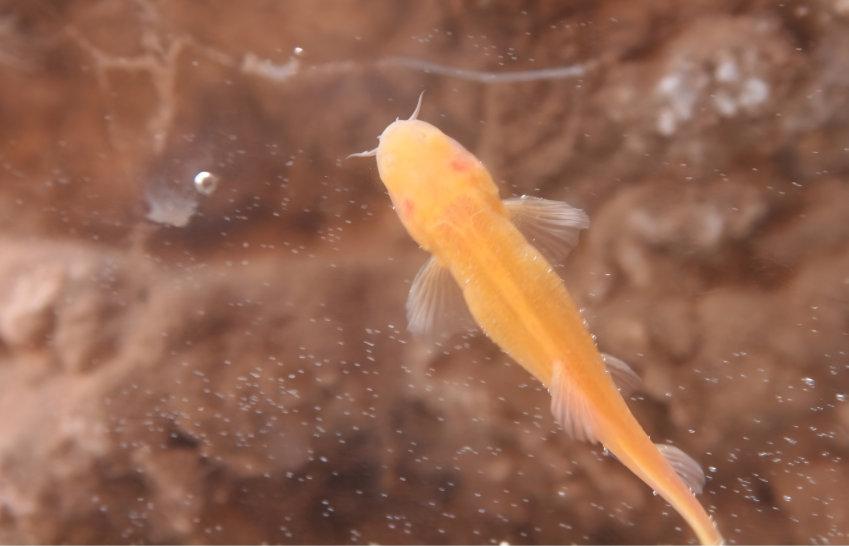Ashgabat, Turkmenistan, 16 July 2025 – a hybrid-format meeting was held at the Ministry of Environmental Protection of Turkmenistan with the participation of representatives from the Michael Succow Foundation for Nature Protection (MSF, Germany), Conservation X Labs (CXLs, USA), the Slovak Speleological Society, the Ministry of Ecology, Environmental Protection and Climate Change of the Republic of Uzbekistan, the Surkhan State Nature Reserve of the Republic of Uzbekistan, the Secretariat of the National Commission of Turkmenistan for UNESCO, the Ministry of Environmental Protection of Turkmenistan, the National Institute of Deserts, Flora and Fauna, and national experts involved in the implementation of the CXLs Project.
The purpose of the meeting was to discuss the nomination of the Koytendag and Surkhan State Nature Reserves as a single transboundary UNESCO World Natural Heritage site. The nomination of the Koytendag State Nature Reserve to the UNESCO World Natural Heritage List is a national priority for Turkmenistan and has been under consideration for several years. The initial nomination dossier “Mountain Ecosystem of Koytendag” was prepared and submitted to the UNESCO World Heritage Centre in 2015. However, following a technical evaluation by the International Union for Conservation of Nature (IUCN), a recommendation was made to pursue a transboundary nomination together with Uzbekistan’s Surkhan Reserve to ensure the ecological integrity of the entire Kugitang mountain ecosystem.
 Participants of the meeting. Photocredit to organizers of the meeting.
Participants of the meeting. Photocredit to organizers of the meeting.
The meeting reviewed the draft Declaration of Intent for joint cooperation, the Roadmap, and agreement was reached on applying criteria (vii), (viii), and (x) of the World Heritage Convention under which the property would be described. The proposed Tentative List entry under the new title “Karsts, Caves and Canyons of the Kugitang Ridge” was also discussed, along with the next steps for its submission to the UNESCO World Heritage Centre. Despite the Kugitang mountain range being divided by an international border along its ridge and watershed, the landscape remains geographically and ecologically coherent and features diverse karst phenomena, including cave labyrinths and countless canyons of exceptional geological, geomorphological, aesthetic and ecological value. A transboundary approach allows for the comprehensive representation of the region’s most pristine caves, canyons and mountain ecosystems with their unique flora and fauna in both countries.
The proposed site is characterized by high mountain ridges dissected by deep canyons, many exceeding 100 metres in depth, and a complex karst morphology comprising more than 300 caves, sinkholes, and vertical shafts of various sizes, formed through erosion of Jurassic limestone. The cave system contains extremely diverse geological formations of breathtaking beauty, considered among the most significant in Eurasia. Additionally, the mountain massif represents key periods in Earth’s geological history — from the Precambrian to the Cenozoic — and contains fossil formations, including globally important dinosaur footprints.


Kugitang Mountain range. Photocredit to Annameredov Islam
In recent years, several joint scientific expeditions supported by various foundations and international organizations have been conducted, resulting in new data on the biodiversity of the Koytendag Reserve. Despite limited study, the flora and fauna of Koytendag are noted for their diversity, hosting a significant number of species, including threatened species listed in national and international Red Lists and endemic species. The area is home to the westernmost and most isolated population of the markhor (Capra falconeri), which has a very restricted global distribution. The presence of a healthy population here is therefore crucial for its global conservation. Furthermore, the mountains support a transboundary population of Bukhara urial (Ovis vignei bochariensis). The region is also home to bird species classified as endangered, such as the saker falcon, Egyptian vulture, steppe eagle, cinereous vulture, bearded vulture, and others included in various IUCN Red List categories. The ichthyofauna includes a unique endemic cave-dwelling fish — the Koytendag blind loach. The region features characteristic Central Asian fauna and flora with a high proportion of narrow and broad endemics and Red List species, concentrated in a relatively small area, contributing to the exceptional biodiversity of the mountain range and state nature reserves, which surpasses that of the surrounding semi-desert and mountain regions.
 Koytendag blind loach. Photocredit to Mengliyev Shaniyaz
Koytendag blind loach. Photocredit to Mengliyev Shaniyaz
National experts will continue working on the preparation of the transboundary nomination in close cooperation with international consultants from the Michael Succow Foundation and experts from Uzbekistan, taking into account the latest requirements of the UNESCO World Heritage Convention.
Prepared by: Ms. Sh. Karryeva, Technical Advisor, Conservation X Labs
The event supports the achievement of:
| Priority Area of REP4SD No 5 dedicated to SDG 15: “Protect, restore and promote sustainable use of terrestrial ecosystems” |
| 5.2.3 development of ecological corridors for migratory species of animals and birds, transboundary cooperation on protection of key habitats, including protected areas; |
| Priority area No 6 of REP4SD dedicated to SDG 17: “Strengthen the means of implementation and revitalize the Global Partnership for Sustainable Development” |
| 6.5 Conducting joint activities for the protection and conservation of the UNESCO World Cultural and Natural Heritage Sites. |



